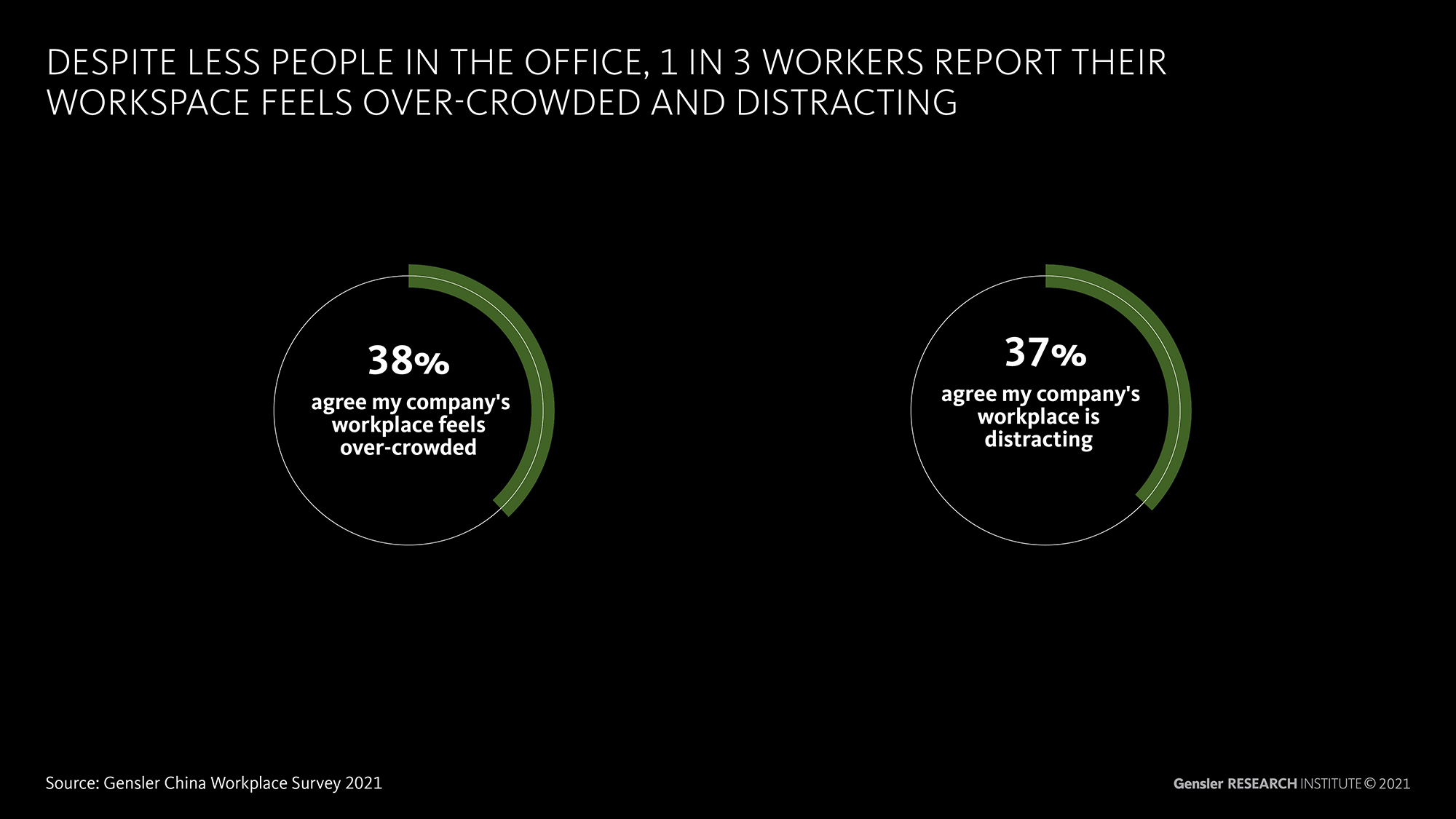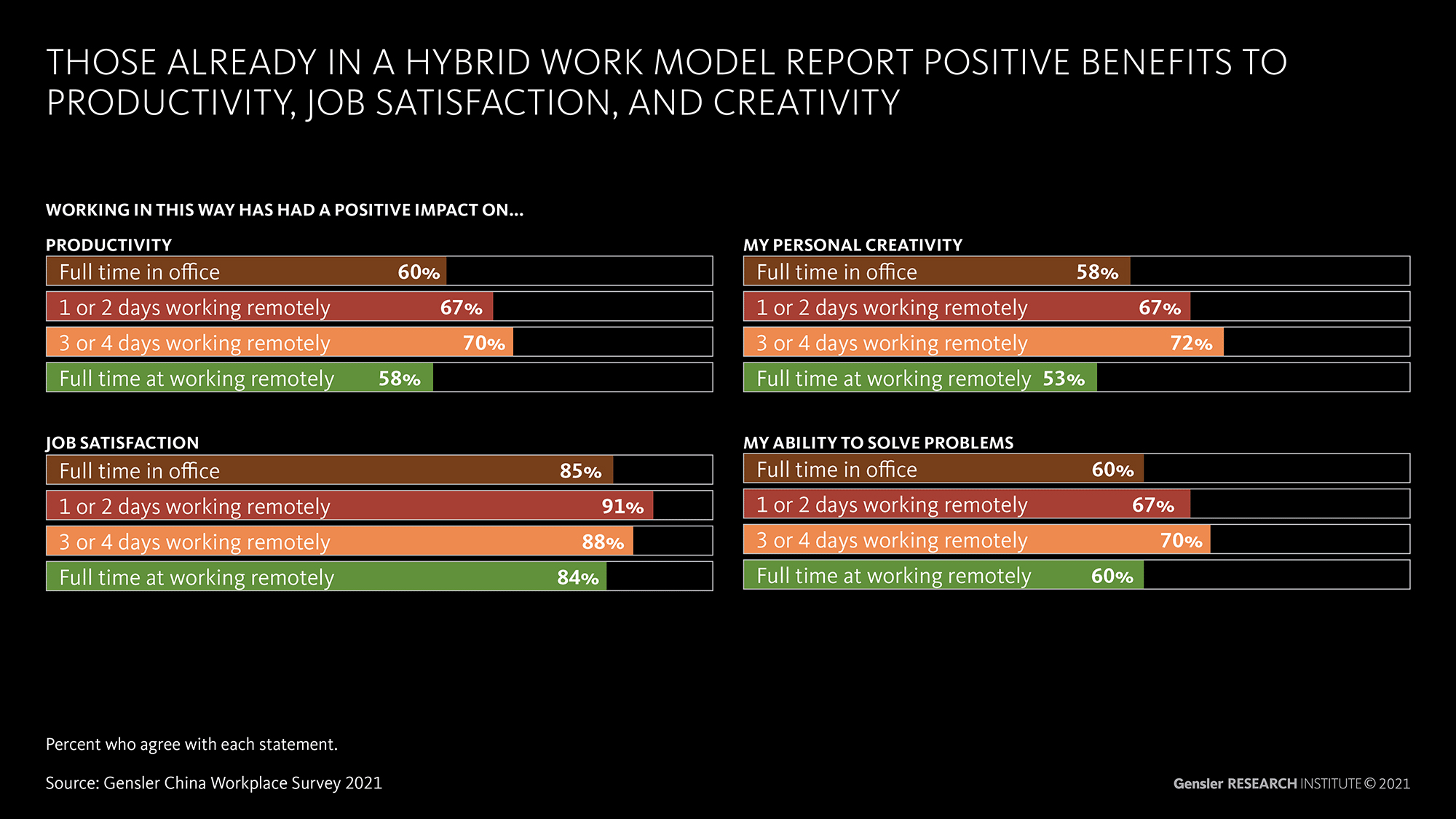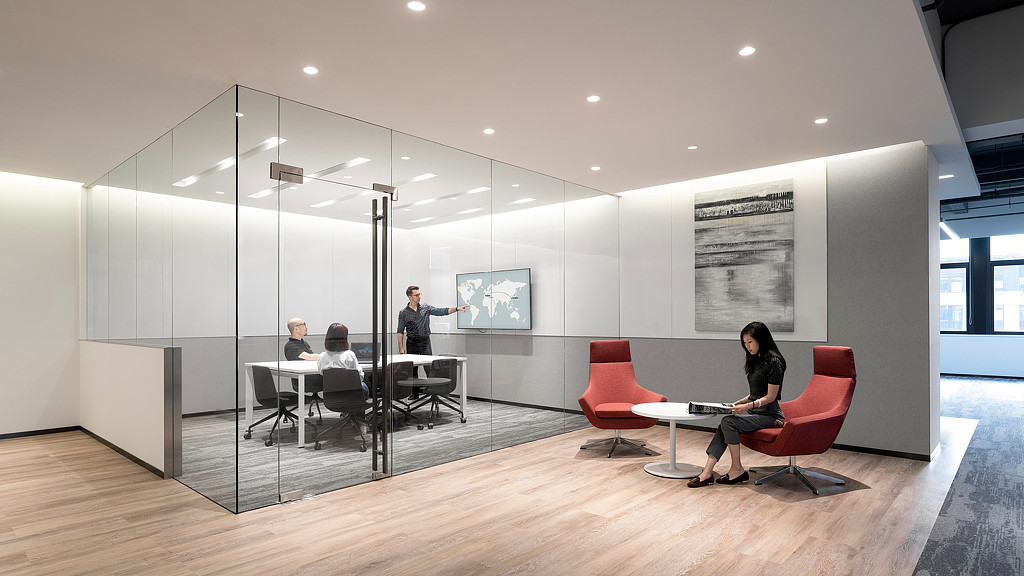China’s Return Offers a Glimpse Into the Post-Pandemic Workplace
May 19, 2021 | By Xiaomei Lee
Chinese workers have returned to the office at levels unparalleled in the rest of the world. Gensler’s China Workplace Survey, including over 3,000 office workers, found that 99% of office workers say they are either at the workplace full time or working in a hybrid model, splitting their time between the workplace and various alternative locations. Here’s how that compares on the international stage: over half of office workers in the U.S., UK, and Australia are still working remotely full time. China’s profound and successful transition back to the office was the first of its kind — and we’re now seeing the results of that effort.

Here are some emerging findings on China’s return to the workplace:
1. The workplace is clearly here to stay — but workers will bring new expectations from their experience working from home.The workplace quickly and dramatically regained its prominence as the key location for professional work in China — 99% of Chinese workers spend at least 1 day in the office every week, and 2/3 spend the majority of their working time in the office. Working from home during the pandemic did uncover problems that already existed with the physical office. Namely, working in isolation at home is great for focus work. But one in three office workers in China now say their workplace feels overcrowded and distracting. Further, many workers say that they can’t find privacy or private rooms when they need it. Workers want the best of what they experienced at home to be applied to their workplaces.

A hybrid work model means the typical workweek is split between their workplace and various alternative locations, such as coworking sites, client sites, or the home. Gensler’s workplace survey data suggests that this way of working combines the best elements of mobility with the benefits of working in person with colleagues at the workplace. In fact, nearly nine in 10 office workers in China are already working in a hybrid model. And this dynamic isn’t new — office workers in China were already relatively mobile. Now that they’ve returned to the office, they’re once again embracing the autonomy to choose the location that works best for them.

Workers across the world see the upsides of the ability to work both at the office and remotely. But among the countries Gensler has surveyed after the pandemic began — the U.S., UK, France, Australia, and China — there is near unanimity that the hybrid work model is the ideal way of working. China, however, is among the only countries in the world to control the novel coronavirus, and therefore, to test how this way of working can exist in a post-pandemic world. While addressing the ideal balance of time in the office may be speculative in other countries, workers in China returned to the office. We’ve found that 78% want the hybrid work model to be their way of working.
China may offer our best vision yet of what the future may hold for the workplace, mobility, and remote work. As the coronavirus unfolded, the workforce here adopted to home environments and virtual collaboration tools at a rapid pace. Currently, workers have embraced a new work paradigm of hybrid work, maintaining the benefits of working remotely by establishing the workplace as the anchor of the workweek. After a global pandemic, being at the forefront of the return to the workplace is no small task. As our workplace survey results in China demonstrate, a shift to a post-pandemic workplace will require agility, flexibility — and above all — a willingness to listen to employees on where they work best.
For media inquiries, email .

